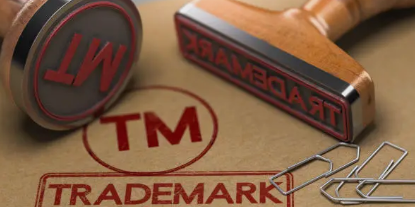Trademark Public Search Online
A Due Diligence Audit Report typically contains detailed information about the findings and assessments conducted during a due diligence process. The report is essential for businesses, investors, or stakeholders to evaluate the risks and opportunities associated with a potential investment, partnership, acquisition, or other significant business decisions. While the specific contents of a Due Diligence Audit Report may vary depending on the nature of the investigation and industry standards, here are some common elements typically included

Trademark Objection in India
Descriptiveness: The trademark is considered descriptive and lacks distinctiveness, meaning it merely describes the goods or services rather than serving as an indicator of their source.
Similarity to Existing Marks: The proposed trademark is similar to existing trademarks that are already registered or pending registration for similar goods or services. The examiner may raise objections if they believe the proposed mark is likely to cause confusion among consumers.
Generic or Deceptive Terms: The trademark consists of generic terms that are commonly used to refer to the goods or services, making it ineligible for trademark protection. Additionally, marks that are deceptive or likely to mislead consumers may face objections.
Violates Public Order or Morality: The trademark contains elements that are offensive, obscene, or contrary to public order or morality. Such marks are generally not registrable under trademark law.
Improper Representation: The trademark application may contain errors or inconsistencies in the representation of the mark, such as improper formatting, unclear drawings, or incomplete descriptions.
When a trademark objection is raised by the examiner, the applicant is issued a formal examination report detailing the grounds for objection. The applicant is then given an opportunity to respond to the objections raised within a specified period, usually within 30 days from the date of issuance of the examination report.
What is Trademark Objection
Lack of Distinctiveness: The trademark may be deemed too generic, descriptive, or lacking in distinctiveness to serve as a unique identifier for the goods or services.
Similarity to Existing Marks: The proposed trademark might conflict with existing trademarks that are already registered or pending registration for similar goods or services. The examiner may believe that the similarity could lead to confusion among consumers.
Descriptiveness: The trademark may be considered purely descriptive of the goods or services it represents, rather than serving as an indicator of their origin.
Contravention of Legal Requirements: The trademark may violate legal requirements or provisions of trademark laws, such as being offensive, deceptive, or contrary to public policy or morality.
Procedural Errors: The application may contain procedural errors, such as incomplete information, improper classification of goods or services, or failure to comply with formal filing requirements.
Once a trademark objection is raised, the applicant typically receives an official notification or examination report outlining the grounds for objection and providing an opportunity to respond within a specified timeframe, which varies by jurisdiction but is typically around 30 days.
Trademark Examination Report
Application Details: The examination report will include details about the trademark application, such as the application number, filing date, applicant’s name and address, and details of the trademark being applied for.
Examination Results: The report will summarize the results of the examination conducted by the trademark examiner. This may include whether the application meets the formal requirements for filing, such as proper classification of goods/services, compliance with filing formalities, and payment of requisite fees.
Grounds for Objection: If the trademark examiner identifies any issues with the application, the examination report will specify the grounds for objection. These objections may relate to issues such as lack of distinctiveness, similarity to existing trademarks, descriptive or generic nature of the mark, violation of legal requirements, or procedural errors.
Legal and Procedural Requirements: The examination report will outline any legal or procedural requirements that need to be addressed in order to overcome the objections raised by the examiner. This may include providing additional information, submitting evidence of distinctiveness, amending the application, or clarifying any misconceptions regarding the mark.
Response Deadline: The examination report will specify a deadline by which the applicant must respond to the objections raised. This deadline is typically a fixed period from the date of issuance of the examination report, usually around 30 days, although it may vary depending on the jurisdiction and applicable laws.
Consequences of Non-Response: The examination report may also highlight the consequences of non-response or failure to address the objections raised within the specified deadline. This may include abandonment or refusal of the trademark application, which could result in loss of rights and opportunities for registration.
Guidance for Response: In some cases, the examination report may provide guidance or suggestions for how the applicant can address the objections and overcome the deficiencies identified by the trademark examiner. This may include providing examples, citing relevant case law, or offering procedural advice.



Reasons for Trademark Objection in India
Descriptiveness: The proposed trademark may be considered descriptive of the goods or services it represents, lacking distinctiveness to function as a source identifier.
Similarity to Existing Marks: The trademark examiner may object to the registration if the proposed trademark is similar to existing trademarks that are already registered or pending registration for similar goods or services. The similarity could lead to confusion among consumers.
Generic or Common Terms: If the trademark consists of generic terms or common phrases that are widely used to describe the goods or services, it may face objections as it does not serve as a unique identifier.
Lack of Distinctiveness: The trademark may lack inherent distinctiveness or fail to distinguish the goods or services of the applicant from those of others in the marketplace.
Violates Public Policy or Morality: Trademarks that are contrary to public policy or morality, offensive, obscene, or likely to deceive the public may face objections.
Misleading or Deceptive Marks: Marks that are likely to mislead or deceive consumers regarding the nature, quality, or origin of the goods or services may be objected to.
Improper Representation: If the trademark application contains errors, inconsistencies, or improper representations of the mark, such as unclear drawings, incomplete descriptions, or formatting issues, objections may be raised.
Non-Compliance with Legal Requirements: The trademark application may fail to comply with the legal requirements and procedural guidelines specified under the Trademarks Act, 1999, and related rules and regulations.
Conflict with Well-Known Marks: The proposed trademark may conflict with well-known trademarks or trademarks that have acquired reputation and goodwill in India, leading to objections on the grounds of dilution or tarnishment of the existing mark’s reputation.
Improper Classification of Goods or Services: Errors or inaccuracies in the classification of goods or services specified in the trademark application may result in objections.
Documents Required For Trademark Objection
Cover Letter: Begin your response with a cover letter addressed to the trademark office or registrar. Clearly state the trademark application number, applicant details, and date of the examination report.
Response to Grounds for Objection: Address each ground for objection raised by the trademark examiner in the examination report. Provide detailed explanations, arguments, and evidence to refute the objections and demonstrate why the trademark should be allowed for registration.
Legal Arguments: Present legal arguments and citations of relevant laws, rules, and precedents to support your case. Explain why the objections raised by the examiner do not apply to your trademark application or why they should be overcome.
Evidence and Documentation: Include any supporting evidence or documentation that strengthens your arguments and establishes the distinctiveness, non-descriptiveness, and non-confusability of your trademark. This may include evidence of prior use, consumer recognition, market surveys, or expert opinions.
Amendments or Clarifications: If necessary, propose amendments or clarifications to the trademark application to address any deficiencies or errors identified by the examiner. Ensure that any amendments are consistent with the original intent and scope of the trademark.
Compliance with Formal Requirements: Ensure that your response complies with all formal requirements and procedural guidelines specified by the trademark office. Follow the prescribed format, provide accurate information, and submit the response within the stipulated deadline.
Contact Information: Include your contact information, including mailing address, email address, and phone number, for correspondence purposes.
How to File Trademark Objection Reply
Review the Examination Report: Carefully review the examination report issued by the trademark office. Understand the grounds for objection raised by the examiner and identify the specific issues that need to be addressed in your reply.
Prepare Your Response: Draft a detailed and well-structured response addressing each ground for objection raised in the examination report. Organize your response logically, and provide clear explanations, arguments, and evidence to support your case.
Address Each Ground for Objection: Methodically address each ground for objection raised by the examiner in your reply. Provide factual information, legal arguments, and relevant case law or precedents to refute the objections and demonstrate the registrability of your trademark.
Provide Supporting Evidence: Include any supporting evidence or documentation that strengthens your arguments and validates the distinctiveness, non-descriptiveness, and non-confusability of your trademark. This may include evidence of prior use, consumer recognition, market surveys, or expert opinions.
Propose Amendments if Necessary: If the objections relate to specific deficiencies or errors in the trademark application, propose amendments or modifications to address the issues raised by the examiner. Ensure that any amendments are consistent with the original intent and scope of the trademark.
Comply with Formal Requirements: Ensure that your trademark objection reply complies with all formal requirements and procedural guidelines specified by the trademark office. Follow the prescribed format, provide accurate information, and submit the reply within the stipulated deadline.
Submit the Reply: Prepare multiple copies of your trademark objection reply and submit them to the trademark office in accordance with the specified procedures and instructions. Include any required fees or payment receipts with your submission.
Monitor Progress and Follow Up: After submitting your trademark objection reply, monitor the progress of your application and follow up with the trademark office as needed. Be proactive in addressing any additional inquiries or requests for information from the examiner to expedite the resolution of the objection.
Seek Legal Advice if Needed: If you encounter challenges or complexities during the objection reply process, consider seeking guidance from trademark attorneys or professionals experienced in Indian trademark law. They can provide valuable insights, review your response, and help navigate the objection process effectively.
What to Do After Filing Trademark Objection?
Monitor Application Status: Keep track of the status of your trademark application by regularly checking the official website of the trademark office or registrar where you filed your application. Most trademark offices provide online portals or tracking systems where applicants can monitor the progress of their applications.
Review Communication from the Trademark Office: Stay alert for any communication or correspondence from the trademark office regarding your application. This may include additional examination reports, requests for clarification or amendments, or notices regarding the status of your application.
Respond to Additional Inquiries or Requests: If the trademark examiner requests further information, amendments, or clarifications regarding your application, respond promptly and comprehensively. Address any concerns raised by the examiner and provide the requested information within the specified timeframe.
Seek Legal Advice if Necessary: If you encounter challenges or complexities during the objection process, consider seeking guidance from trademark attorneys or professionals experienced in trademark law. They can provide valuable insights, review any communications from the trademark office, and advise you on the best course of action to move forward.
Attend Hearings or Proceedings: In some cases, the trademark office may schedule hearings or proceedings to further review and adjudicate the objections raised in your application. If required, participate in these proceedings and present your case effectively to the trademark office.
Stay Informed about Deadlines: Be aware of any deadlines or timelines specified by the trademark office for responding to objections, attending hearings, or completing any required actions. Failure to adhere to deadlines may result in adverse consequences, such as abandonment or refusal of your trademark application.
Maintain Communication with the Trademark Office: Keep lines of communication open with the trademark office and promptly address any inquiries or requests for information. Respond to all official communications from the trademark office in a timely and professional manner.
Consider Alternative Strategies: If your trademark application faces significant challenges or obstacles during the objection process, explore alternative strategies or options to protect your trademark rights. This may include exploring settlement negotiations, filing appeals or petitions, or seeking alternative forms of protection for your brand.
Eligibility Criteria for Trademark Objection
Ownership of Prior Rights: Trademark objections can be filed by individuals or entities that own prior trademark rights, whether registered or unregistered, in India. This includes owners of registered trademarks, applicants with pending trademark applications, and individuals or entities with established common law rights in a particular mark through prior use in commerce.
Existence of Conflicting Marks: To be eligible to file a trademark objection, the objector must have a legitimate basis for believing that the trademark application in question conflicts with their existing trademark rights. This conflict may arise due to similarities in the marks, goods or services covered by the marks, or the likelihood of confusion among consumers.
Standing to Object: In some cases, third parties or interested parties who are not directly affected by the trademark application may also have standing to file a trademark objection if they can demonstrate a legitimate interest in protecting the integrity of the trademark system or preventing the registration of marks that are contrary to public policy or morality.
Legal Grounds for Objection: Trademark objections must be based on valid legal grounds as specified under the Trademarks Act, 1999, and related rules and regulations. Common legal grounds for objection include similarity to existing marks, lack of distinctiveness, descriptive or generic nature of the mark, violation of public policy or morality, and other statutory provisions governing trademark registration.
Timeliness of Objection: Trademark objections must be filed within the prescribed time limits specified by the trademark office or registrar. Typically, objections must be filed after the publication of the trademark application in the Trademarks Journal but before the expiration of the opposition period, which is usually around three to four months from the date of publication.
Compliance with Procedural Requirements: Objectors must comply with the procedural requirements and formalities specified by the trademark office for filing trademark objections. This includes submitting the objection in the prescribed format, paying any required fees, providing supporting evidence or documentation, and adhering to the specified timelines.
